-
Lake size{{lakeDetails.size}}
-
Maximum depth{{lakeDetails.maxdepth}}
-
Catchment size{{lakeDetails.catchmentsize}}
-
Mixing pattern{{lakeDetails.mixingpattern}}
-
Geomorphic type{{lakeDetails.geomorphictype}}
This dashboard shows information on the data collected by the regional councils and unitary authorities for two lake water quality and ecological condition measurements. LakeSPI (Lake Submerged Plant Indicators) and TLI (Trophic Level Index). Select an indicator to see the historical monitoring data.
-
Water Quality
Trophic Level Index (TLI)
{{rating() | uppercase}}
{{comment()}}This measure is the Trophic Level Index (TLI). The TLI indicates the life supporting capacity of a lake and is based on four water quality indicators.
Show more information Hide informationTrophic Level Index (TLI) history for this lake
Trophic Level Indicator (TLI) which measures four parameters: water clarity, chlorophyll content, total phosphorus and total nitrogen. From these parameters a TLI value is calculated. In cases where water clarity data is missing a three parameter TLI is calculated. The higher the value, the greater the nutrients and fertility of the water which encourages growth, including algal blooms. As a rule, higher TLI scores mean poorer water quality. View a factsheet on TLI
Showing:toTLI history for Lake Papaitonga (Waiwiri)YearWhat do the icons mean?
VERY GOODVery good water quality. Trophic Level Index of 0-2. Microtrophic lake conditions.GOODGood water quality. Trophic Level Index of 2-3. Oligotrophic lake conditions.FAIRAverage water quality. Trophic Level Index of 3-4. Mesotrophic lake conditions.POORPoor water quality. Trophic Level Index of 4-5. Eutrophic lake conditions.VERY POORVery poor water quality. Trophic Level Index of greater than 5. Supertrophic lake conditions.NO DATANo data available.TLI history for Lake Papaitonga (Waiwiri) data tableYear TLI Score Year TLI Score -
Ecological Conditions
Lake Submerged Plant Indicators (LakeSPI)
{{rating() | uppercase}}
{{comment()}}The LakeSPI status describes the ecological condition of the lake and is based on plants present.
Show more information Hide informationLakeSPI history for this lake
LakeSPI (Lake Submerged Plant Indicators) is a method of characterising the ecological condition of lakes based on the composition of native and invasive plants growing in them. A higher LakeSPI percentage result is associated with better ecological health:
LakeSPI N/A LakeSPI {{spiData.details.Value}}% The overall LakeSPI score is calculated using a Native Condition Index ('good' plants) and an Invasive Impact Index (introduced, non-native plants):
Native Condition N/A Native Condition {{spiData.details.NativeIndex}}% Invasive Impact N/A Invasive Impact {{spiData.details.InvasiveIndex}}% NA A higher Native Condition value indicates better ecological condition, but a higher Invasive Impact value indicates invasive plants are negatively impacting native plant communities.
View a factsheet on LakeSPI for more information on these indicators.- LakeSPI
- Native Condition
- Invasive Impact
Showing:toLakeSPI history for Lake Papaitonga (Waiwiri)YearWhat is this graph showing me?
This graph is displaying the overall LakeSPI score over time. The results denote the ecological condition of the lake.
EXCELLENTExcellent ecological health. A LakeSPI score of 75-100%.HIGHHigh ecological health. A LakeSPI score of 50-75%.MODERATEModerate ecological health. A LakeSPI score of 20-50%.POORPoor ecological health. A LakeSPI score of 0-20%.NON-VEGNon-vegetated. A LakeSPI score of 0% (there are no plants present).NO DATANo data available.LakeSPI history for Lake Papaitonga (Waiwiri) data tableSample Date LakeSPI Status LakeSPI % Native Condition Index % Invasive Impact Index %  NIWA LakeSPI is licensed under a Creative Commons Attribution-Non Commercial 3.0 New Zealand License 2012.
Visit the NIWA LakeSPI website.
LakeSPI information has been provided by NIWA.
NIWA LakeSPI is licensed under a Creative Commons Attribution-Non Commercial 3.0 New Zealand License 2012.
Visit the NIWA LakeSPI website.
LakeSPI information has been provided by NIWA.
